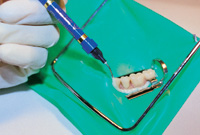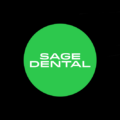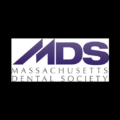When Dr. Sanford C. Barnum of New York invented the rubber dam on March 15, 1864, it was instantly recognized and accepted as the first really effective isolation modality that fulfilled the dentist’s need to work in a dry operating field. The rubber dam has become accepted as the “gold standard” of isolation throughout the world dental community, but it needs to be made easier to use.
Although the use of the rubber dam has become accepted as the highest modality of operational site isolation in dentistry, some deficiencies in the design of the rubber dam and limitations in its practical application in clinical practice have limited the range of dental procedures that may be accomplished with its use, and have caused an attrition rate in clinical practice which is considerable. While the advantages of the rubber dam are universally taught in the curriculum of American dental colleges (Smith & Richeson, 1981), only a small percentage of dentists in private dental practice report that they regularly use the rubber dam in clinical practice. In a survey administered to graduates of the State University of New York at Buffalo School of Dental Medicine, most dentists reported that they rarely or never use the rubber dam for restorative procedures (10% to 17%) and only 62% indicated that they use the rubber dam in endodontics. One reason for low rubber dam usage among practicing dentists cited in this article was that perception of the time needed to place the rubber dam outweighed the perceived benefits of using the rubber dam for the group of respondents in the survey. It was concluded in this article that stressing a practical, realistic approach to rubber dam usage would aid in greater acceptability.1
Application of the principles of field isolation with the rubber dam extend the range of use of the conventional rubber dam to the possibility of its use in prosthetic dentistry. Field isolation with the rubber dam also opens the door to making the rubber dam easier to use and more comfortable to the patient, and therefore will encourage the majority of practicing dentists to return to the use of the rubber dam as an essential adjunct to clinical dental practice.
The slit-dam technique of field isolation has gradually become known in the profession as a practical alternative use of the rubber dam that may extend its range of application to prosthetic procedures requiring subgingival instrumentation. Although there are limitations with this technique, a recent introduction of new materials and devices facilitates general field isolation of dental and alveolar structures, and offers the clinician an alternative methodology of clinical isolation. These devices generally fall into the category of field isolation clamps, barrier adhesives, and specially designed general field isolation rubber dams. This article outlines the use of general field isolation rubber dam clamps and barrier adhesives used in conjunction with conventional rubber dam material prepared with the slit-dam technique for field isolation.
TECHNIQUE
 |
 |
| Figure 1. Two holes are punched in the dam about 1 to 1 1/4 inches apart. | Figure 2. With a scissors, cut a slit in the dam between the holes. |
A word first needs to be said about what the slit-dam technique is, for those dentists not currently using the technique. In the slit-dam technique, the clinician first punches two holes in the rubber dam approximately 1 to 1 1/4 inches apart (Figure 1). The clinician then cuts between the holes with a scissors, to form a slit in the area where field isolation is required (Figure 2). The slit allows retraction of the rubber dam membrane below the free marginal gingiva around teeth that will require subgingival instrumentation. The dam should then be inspected to make sure that the slit is adequate for the area to be isolated.
As shown in Figure 3, the rubber dam is then placed into the mouth of the patient, and secured with a conventional rubber dam clamp. Once the rubber dam and clamp are in position, the rubber dam is stretched over an external frame as in the conventional use of the rubber dam.
 |
 |
| Figure 3. Rubber dam/clamp being placed with forceps. | Figure 4. The conventional clamp being removed and the Quadraclamp being put in its place. |
 |
 |
| Figure 5. With Quadraclamp placed over the rubber dam, stretch the rubber dam anteriorly to the canine and floss between the contacts. | Figure 6. Quadraclamp in place and the rubber dam secured anteriorly. |
With the dam in place in the mouth, and using the thumb and forefinger to press the dam downward while retaining it in the mouth, remove the conventional clamp with a forceps and replace it with the Quadraclamp (Figures 4 and 5) then stretch the rubber dam anteriorly to the canine and floss it through the contact point (Figure 6). With the Quadraclamp in position, retract the rubber dam laterally around the area to be field-isolated. With the dam retracted, a barrier material is then applied to perfect the tissue-dam interface around the perimeter of the area to be field isolated. This can be accomplished in a number of different ways, depending on the type of product or material to be used. Two commercially available barrier adhesives are available from Ultradent under the names of OraSeal and Opal Dam. OraSeal is said to adhesively adhere to both rubber dam materials and also to soft tissues in the presence of moisture. Opal Dam, currently being used in bleaching, is a light-cured barrier material, and is favored by the author as a barrier adhesive to refine this field isolation technique. Therefore, the discussion will first center on the application of a lightcured barrier adhesive, Opal Dam. (Note: Cyanoacrylates, commonly used as adhesive suturing materials, are used for this purpose outside of the United States, but are not yet approved in the United States by the FDA for mucosal applications.)
 |
 |
| Figure 7. Clinician syringing Opal Dam around the perimeter of the field-isolation site. | Figures 8a and 8b. Opal Dam being light cured. |
 |
 |
| Figure 8b. | Figure 9. Photo of completed site with the clamp and barrier seal intact. |
 |
| Figure 10. Clamp and barrier seal intact. |
Opal Dam is first syringed over the edges of the dam, covering both the dam and the tissues to which it is to be attached (Figure 7). Once the entire perimeter of the field isolation site is covered with the barrier material, the light-curing unit is applied to all of the material around the site (Figures 8a and 8b). Once the barrier material has polymerized, inspect the entire periphery of the site for an intact moisture seal (Figures 9 and 10).
The final field-isolated site should expose not only the teeth, but also the gingival tissues on the operating side of the dam for instrumentation. This may be verified by a clear width including at least the free marginal gingival tissues and the sulcular area around the tooth or teeth to be prepared.
Another method of preparing a perfected tissue-dam interface is to use a putty consistency impression material as a substitute barrier material. This can be any one of a number of varieties of chemical formulations, including polyvinylsiloxane, or alternatively an inexpensive rubber base formulation. The technique consists of first applying a 1/8” to 3/16” swatch of tray adhesive around the periphery of the slit prepared in the dam, and allowing it to dry without sealing the slit shut. Place and secure the dam.
Prepare impression material of putty consistency for insertion around the field isolation site by rolling it with your hands into a tube-shaped length approximately 1/8” or less in cross-section. With the dam retracted, press the material all the way around the periphery of the site, while maintaining a visible band of soft tissues within its borders. When the impression material sets, it is attached to the rubber dam and intimately seals the periphery of the work site to prevent moisture leakage and debris from passing through the tissue-dam interface.
DISCUSSION
General field isolation has many applications for dentistry, particularly in the areas of prosthodontics and cosmetic dentistry. Exposure of both the teeth and soft tissues simultaneously in the presence of the rubber dam not only allows for subgingival instrumentation, but also allows the clinician to maximize the efficacy of dental materials in the presence of a moisture-free environment.
In prosthetics, crown and bridge preparations may be constructed with ease with the rubber dam in place. Gingival retraction cord may be placed in a moisture-free environment. Provisional crowns and bridges may be constructed and placed in the presence of a rubber dam. Even limited die impressions may be taken with the rubber dam in place, prior to a full-arch impression. The bonding of porcelain inlays and onlays as well as other bonding procedures may be performed in an environment that increases bond strength and enhances the efficacy of dental materials. Grossly carious teeth which cannot be isolated with the conventional rubber dam technique may be isolated for caries evacuation, endodontic instrumentation, and restorative procedures.
Periodontal medicaments may be applied without contamination and dilution by saliva. Clinicians performing cosmetic procedures such as porcelain laminates may prepare the teeth, take impressions, and seat the final laminates while monitoring gingival adaptation and aesthetics associated with the final prosthesis. Both general dentists and specialists alike will benefit greatly by incorporating the techniques of general field isolation into their practices.
Reference
1. Joynt RB, Davis EL, Schreier PJ. Rubber dam usage among practicing dentists. J Oper Dent. 1989;14:176-181.
Dr. Heasley is a practicing dentist in Iowa City, Iowa. His expertise is in methods of field isolation of the dentition and alveolar arch in order to improve clinical performance and maximize the efficacy of restorative materials. Dr. Heasley will be lecturing at various sites throughout North America on improved methods of clinical isolation with the rubber dam, beginning in January 2003. He can be contacted at (888) 871-5514 or (319) 354-3042.
Disclosure: Dr. Heasley is CEO and President of Radix Corporation, a firm specializing in clinical isolation methods for dentistry. He is the inventor of such products as Quik Assist, Quadraclamp field isolation clamps, and ProsthoDain general field isolation rubber dams.










